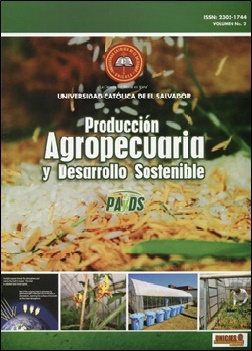Fertigation and fertilization focused on the development and yield of the tomato plant (Lycopersicon esculentum)
DOI:
https://doi.org/10.5377/payds.v2i0.5423Keywords:
Fertigation, focalized fertilization, tomato, experimental field, nitrogenAbstract
This experiment was carried in a green house in the experimental field of International Centre of JICA-Tsukuba, Japan, from May 2nd to August 5th of the year 2011. The purpose was to analyze different quantities of nitrogen and its incidence in the development and yield of tomato plant (Lycopersicon esculentum) when it is under fertigation and focalized applications. The experimental design was performed using randomized blocks with three different levels of nitrogen for plant: 2.4gr N, 4.8gr N, 7.2gr N (under fertigation) and 6 gr. N with focalized application as control. Ammonium sulfate was used as source of nitrogen. Tomato plants were set up in eight containers with the following sizes: 2.70m long, 85cm wide and 20cm. depth. Results showed that treatment of 7.2gr of nitrogen per tomato plant – using fertigation- held a constant development and production with high quality for selling 4.5ton/1000m2. It was also evident that when applying ammonium sulfate under fertigation conditions an optimum electro conductivity level was maintained on the ground.
Producción Agropecuaria y Desarrollo Sostenible, Vol. 2, 2014:33-43
Downloads
723
Downloads
Published
How to Cite
Issue
Section
License
© Producción Agropecuaria y Desarrollo Sostenible
Copyright of the articles is transferred to the journal Producción Agropecuaria y Desarrollo Sostenible
As a user of this journal, you have:
- Open access to consult the information contained in this issue
- Permission to copy, distribute, display, perform or combine past practices in the use of information, provided it is strictly non-profit.
This journal uses a CC BY-NC license





